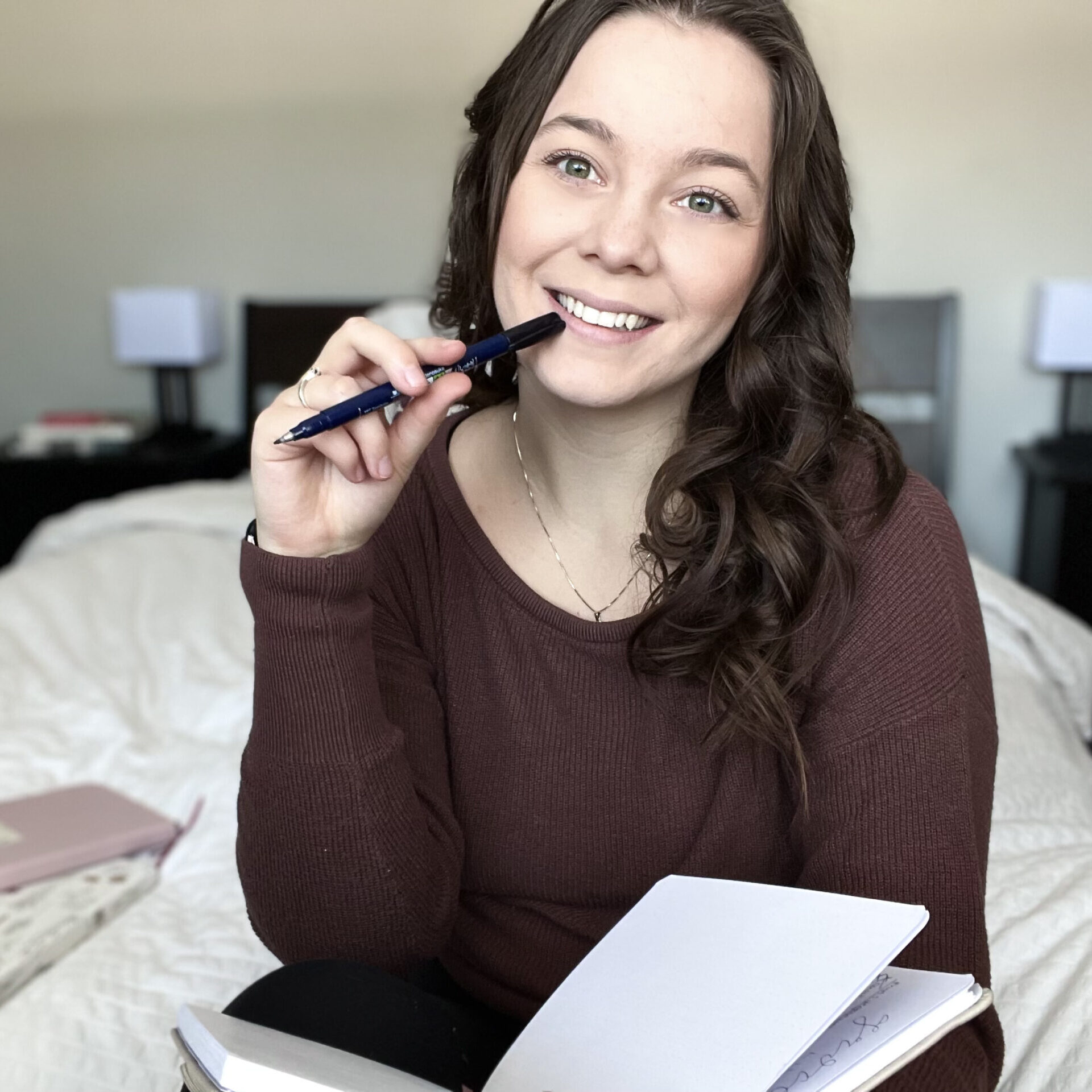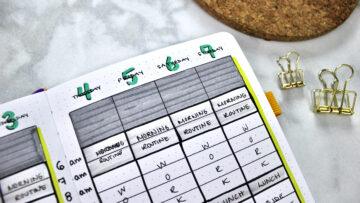I never thought before this year that I would become a gardener. We always had an herb garden out back, along with what felt like the never ending pots of flowers (love you mum!). Still, I didn’t fully find joy in going to the backyard to water or do the spring planting when asked.
Now having my own place, I wanted to give it a try. A friend of mine from school had a vegetable garden filled with tomatoes, peppers, herbs, and more. While looking at them last year I thought this is what I want to try out. Flash forward to today I now have spring garden in full bloom and started a fall garden just a few weeks ago at the time of writing this post.
I found myself feeling relaxed and, in the moment, almost meditative in a way. Watering, planting, weeding, and tending to the plants; all in hopes that it works out in the end with some fully grown and ready to consume food.
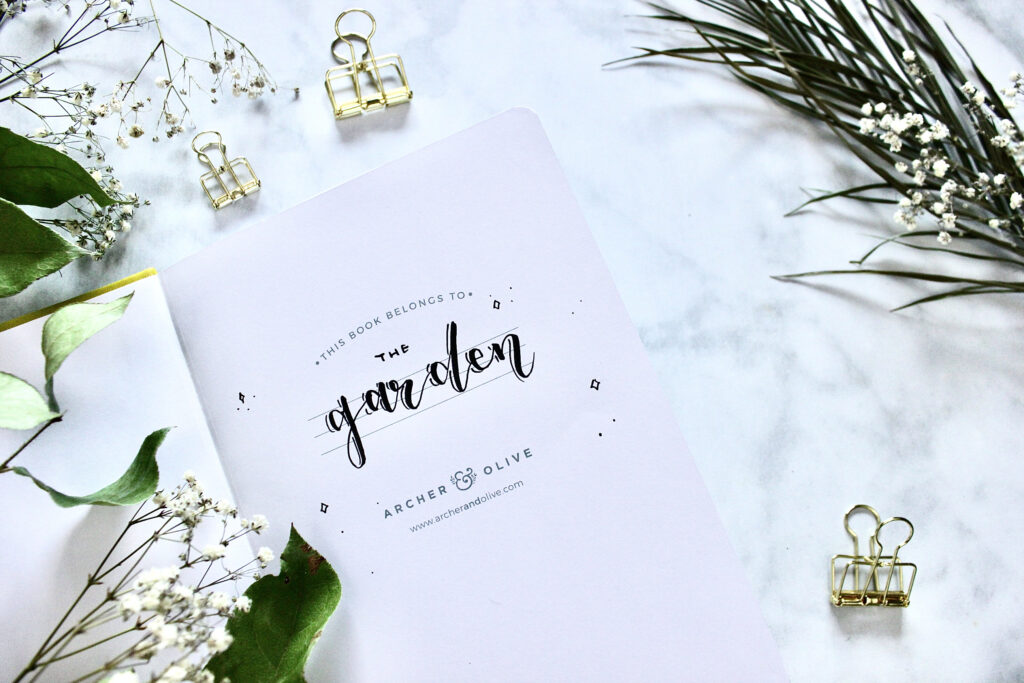
I knew I wanted to journal about my progress but really had no idea where to start. Not everything out there would be applicable to my location and size of garden. Plus being a beginner to gardening what did I really know about what to track!
With a season under my belt and moving into the fall garden, I have figured out exactly what gardening journal spreads I want to include that are both minimalistic, functional and aesthetically pleasing to look at.
Supplies:
Archer & Olive A5 Notebook – use “createwithcait10” for 10% off
Tombow Fudenosuke Brush Pen, 2-Pack
Tombow Dual Brush Pens Grey Scale
Cover Page
The plan is to use this journal year after year to mark the progress, successes, and total fails in my gardening journey. Because of that I wanted to have an indicator that this was for the 2022 garden year (you can’t miss it with the big bold letters… hopefully). The main goal of making this planner functionality, but I still wanted to have those cute touches that make bullet journaling what it is for me.
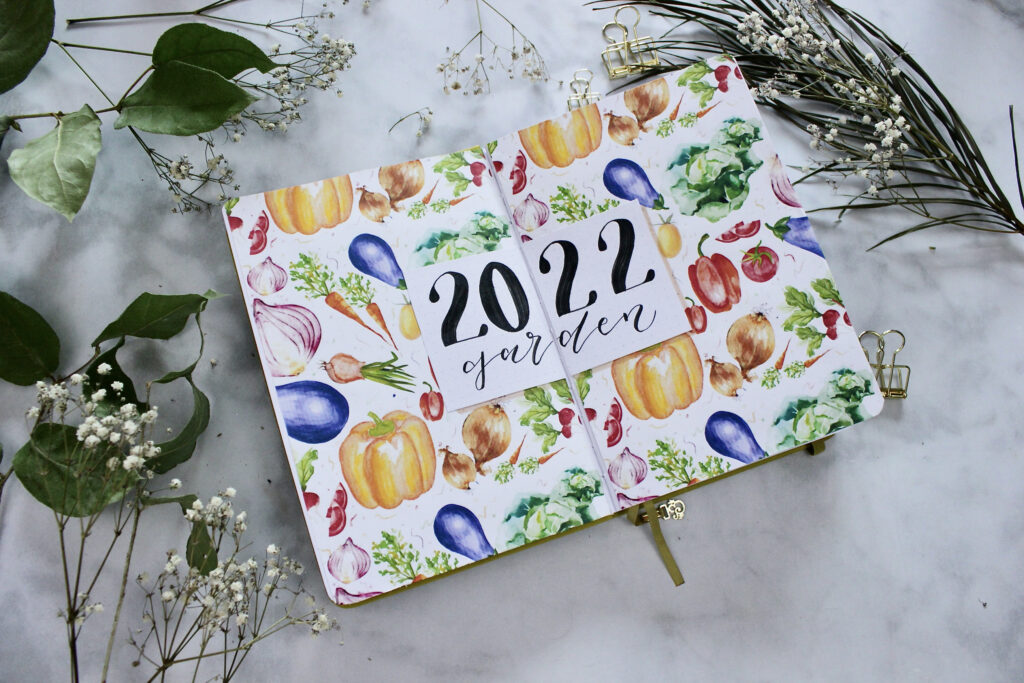

First, I printed off a watercolour design and taped it in my journal using the crafters tape. Keeping it classic I wrote out 2022 garden in a font style that I’ve been loving all of 2022. I know that this style of lettering is what I’ve adapted this year so I will be curious to see what changes occur year after year using the journal.
2022 Overview
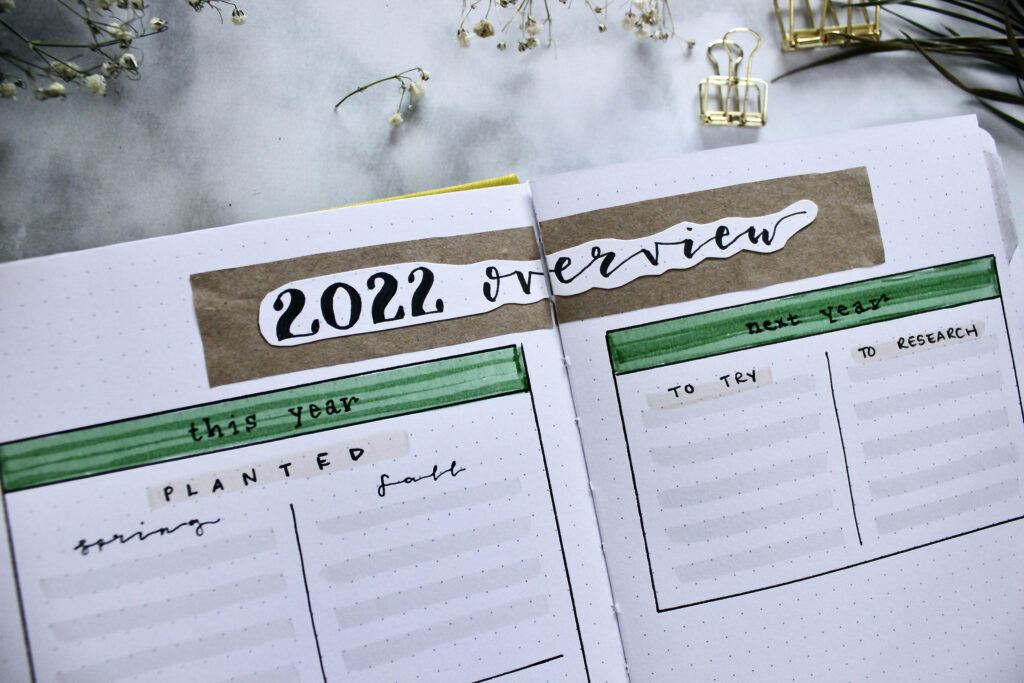
Keep in mind that this year is my first time seriously gardening. A lot of the spreads that I’m creating will only require a page or 2 MAX. That doesn’t mean I won’t be using more in future years or that you can add the same page more than once when setting up your garden journal.
For the overview page I wanted to have a quick snapshot of what the year looked like:
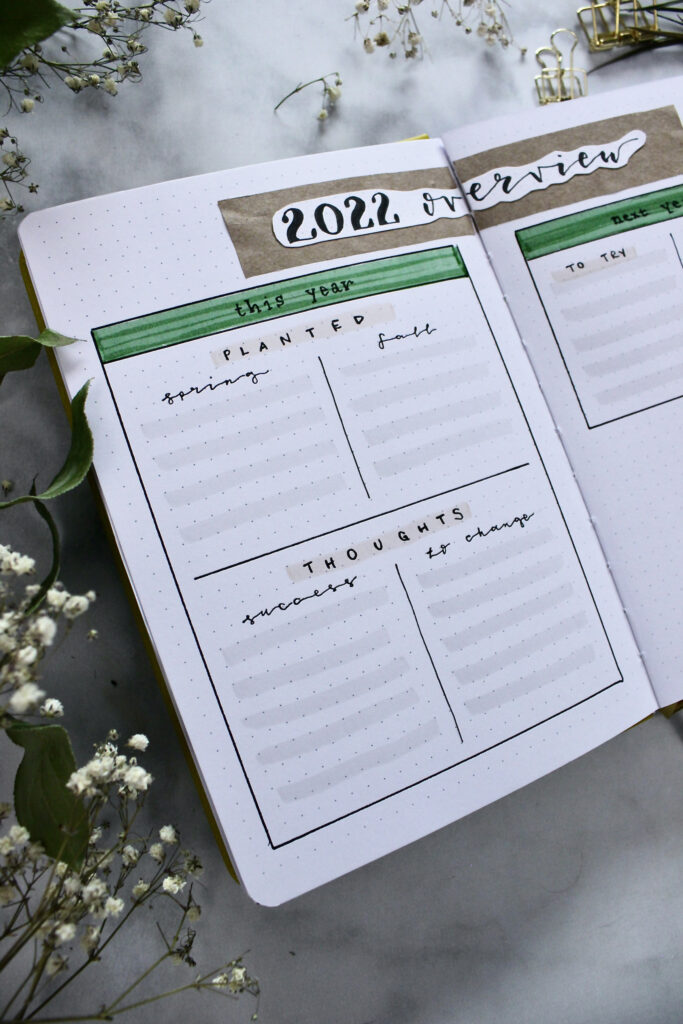
- What I planted in the spring and fall
- My successes
- Things to change
Knowing me I will want to write everything and anything about what happened throughout the year, but that is not the goal of this page. It is to get my memory going on where I started when looking back at the journal in years to come.
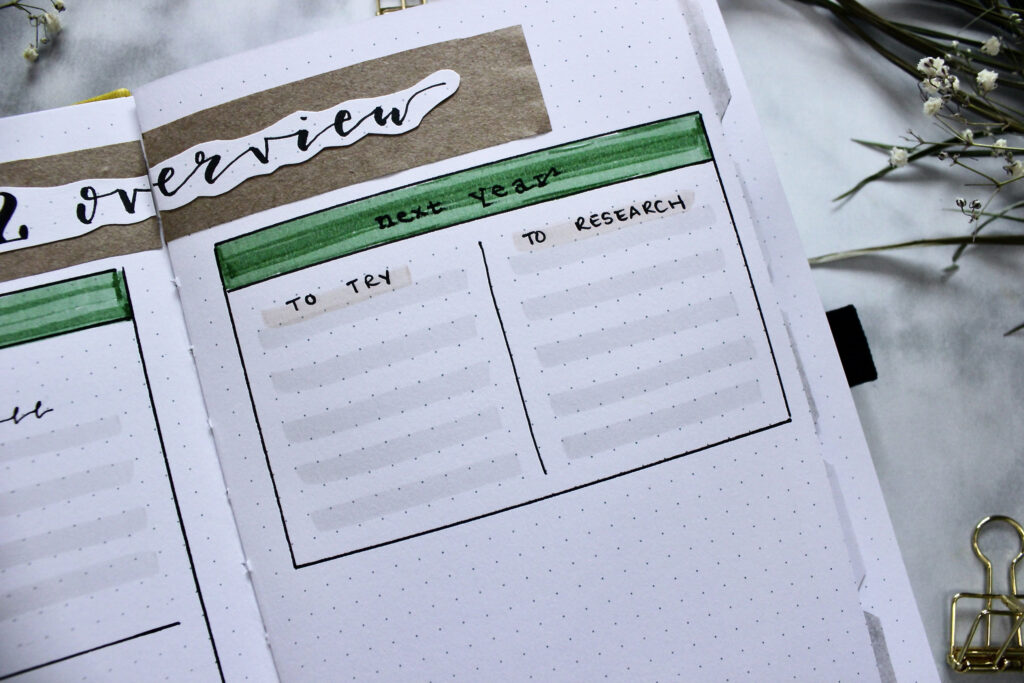
Right next to it on the right page is what I want to try and research for next year. There are already a few things I’d like to plant… like everything (sorry not sorry), that will end up under this section. But it will be a good starting place to see what progression I need to take to get better. One thing I know I have to learn more about is pest control. Let’s just say my tomatoes were loved by the bugs this year.
The bottom will store a few photos. I’m thinking what the garden looked like at the beginning, middle and end of the season… we shall see!
Seed Information
When researching information on how to start a garden as a beginner, the first step always seemed to be starting your plants indoors under a grow lamp before planting them in the spring. The seeds needed time to mature before going outside to brave the elements.
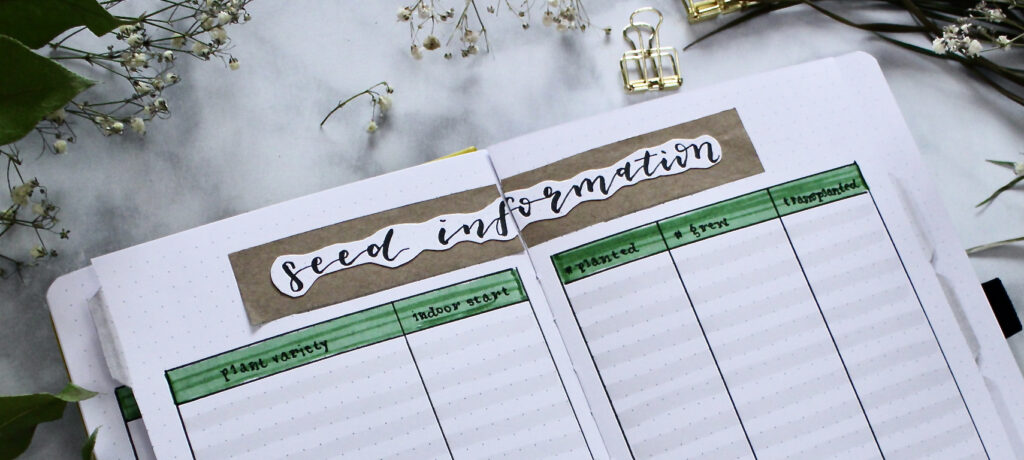
What this meant for my garden was a makeshift greenhouse out of plastic boxes, cellophane wrap and wood pieces put together by my girlfriend (thank God for her!).
This year I took a LOT of photos to mark at lot of the firsts, after all it was new and exciting so anytime soil was picked up, seeds were planted, and buds grew there was maximum excitement in the house. That is why this seed information sheet was something I knew I needed.

What I found when starting plants indoors was that not every seed you planted grew. I wanted to know what plant was planted when, how many seeds were planted vs. how many grew and the date they were transplanted outdoors.
In knowing this I can adjust based on my successes and fails with each plant. Some of the things that I already learned were:
- Not all seeds should be planted at the same time
- Transplant the seeds outside earlier than I did
- When transplanting the seeds, plant them further apart (they will GROW!)
Plant Log
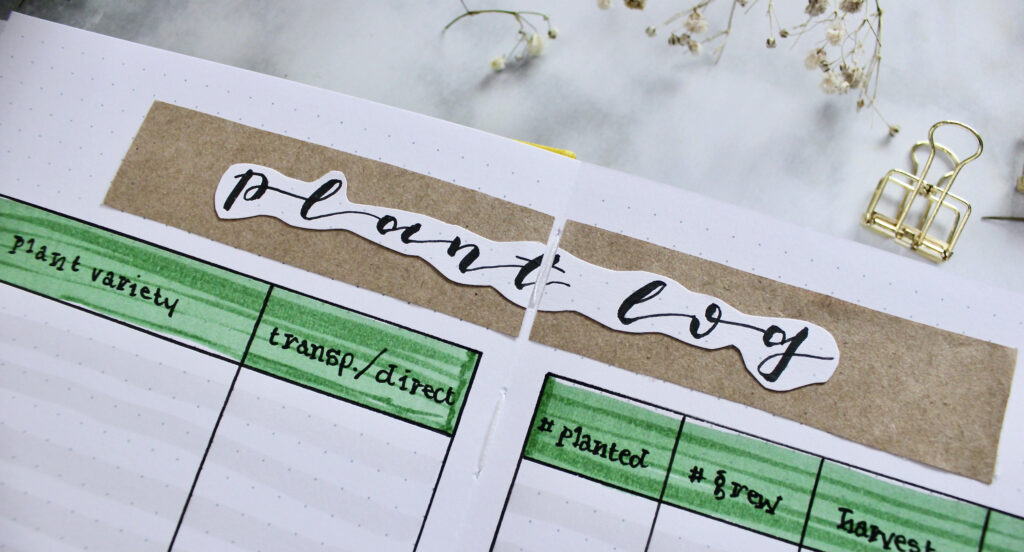
The plant log takes a very similar format as the seed log, partly because I want to have the same information tracked:
- Variety
- Number planted
- Number grew
But there is also other important information to keep track of too. One thing that I’ve learned is once the weather starts to get warmer, you can plant the seeds directly into the ground and no longer need to start them indoors. So, when planning out the spreads I needed to make note of that with the transplant/direct seed column.
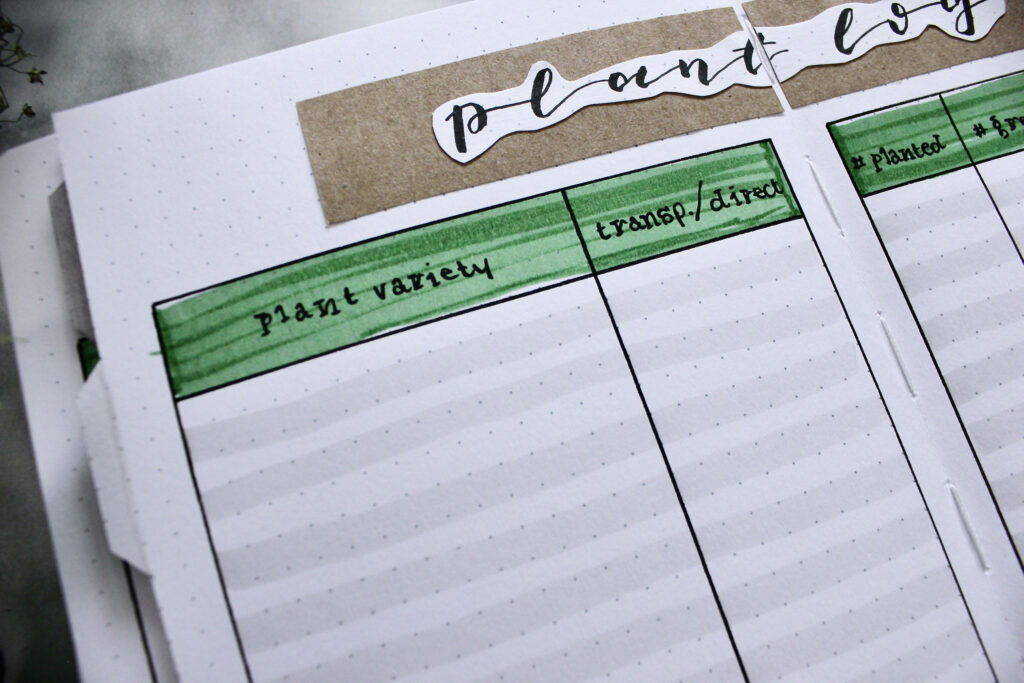
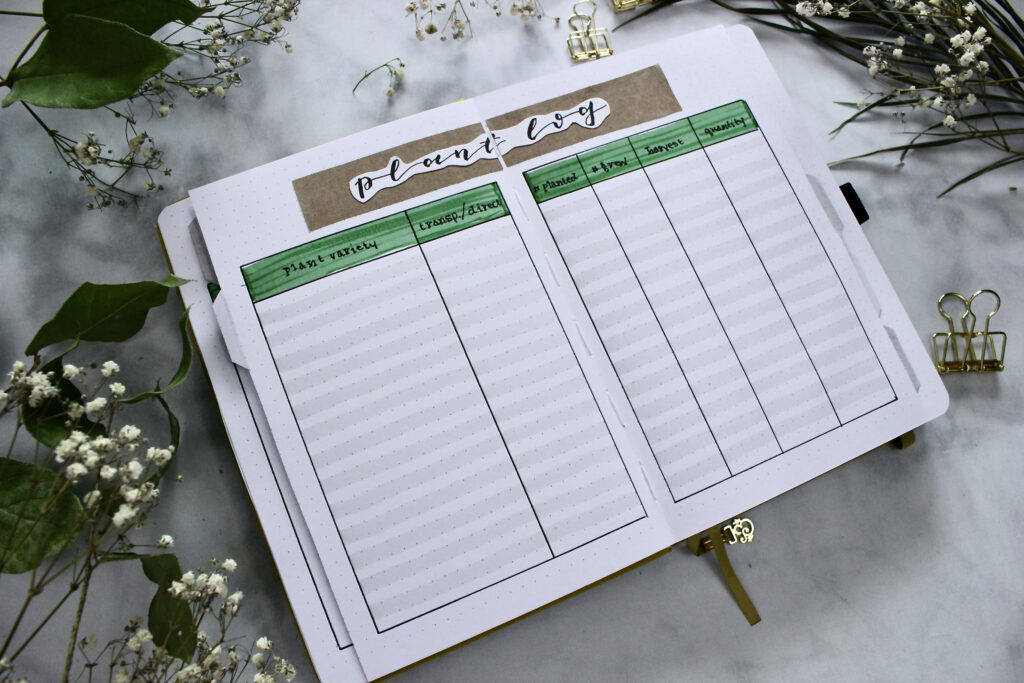
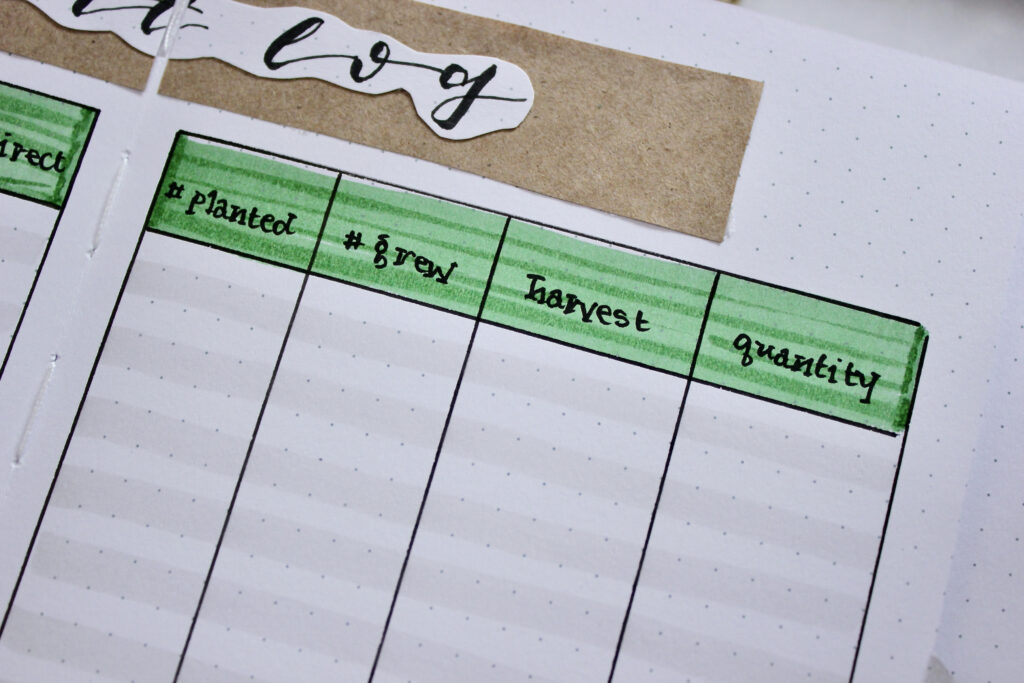
Since these plants will hopefully survive the outdoors, I wanted to know both the harvest date range and the quantity gathered from the harvest. This will help me next year when planting and preserving.
Seeding Log
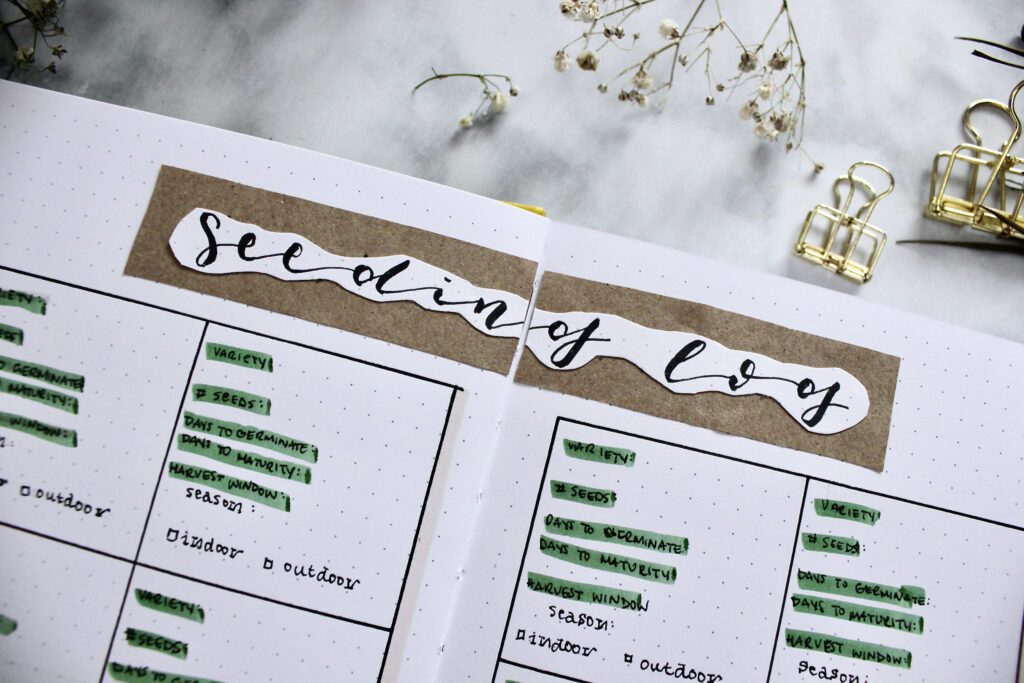
Now that my spring garden is in full bloom and providing a harvest, I felt confident to try my hand at starting a fall garden. If you are new to gardening like I am the one thing you will need to be aware of over anything else are your frost dates. The first date (the spring one) is a guideline to when you can plant seeds outdoors. The second date (the fall/winter one) is a guideline to when your plants could be killed off by the frost if they’re frost sensitive.

That is why knowing the days to germinate and days to maturity are so important. It is an indication of what time range you need to be planting things. I needed a quick snapshot of each seed I was using, when they could be planted and where, either indoors or out.
The seeding log did just that! I can see a quick overview of what seeds I have on file and can pull from and plant further on in the season.
Plant Profile

The final page I’ll be creating for every seed I plant. Knowing this will take a little bit of time, I created the free printable below for your use and mine too!
This is where I plan to track all the details for a specific plant during this year. The left side of the page is an overview or snapshot to the plant’s information.

- Variety
- Supplier
- Price
- Special dates
- Rating of seeds
- Instructions
- How plant was started
- Sun requirements
- Fertilization schedule
- And succession planning
The right side will be more for general notes. Here is where I would put in anything that I would deem important about the plant.
For example, my tomato plants may look something like this:
- All seeds planted grew minus one
- First transplanted 6 plants on June 8th into one big grey container
- Too late planting outdoors should have moved earlier
- Had to repot 2 into their own smaller black container
- Should have moved another 1 into their own container but didn’t want to damage the root system
- **Learned** à remove the bottom leaves before planting to place stem deeper into pot
- This helps with growing stronger root systems and a healthier plant
- Bug issues present late June and continued until _______
- Pulled off about 10 tomatoes so far that were bug eaten
- Buy a bigger trellis for next year
- Look into advantages/disadvantages of removing suckers vs. not
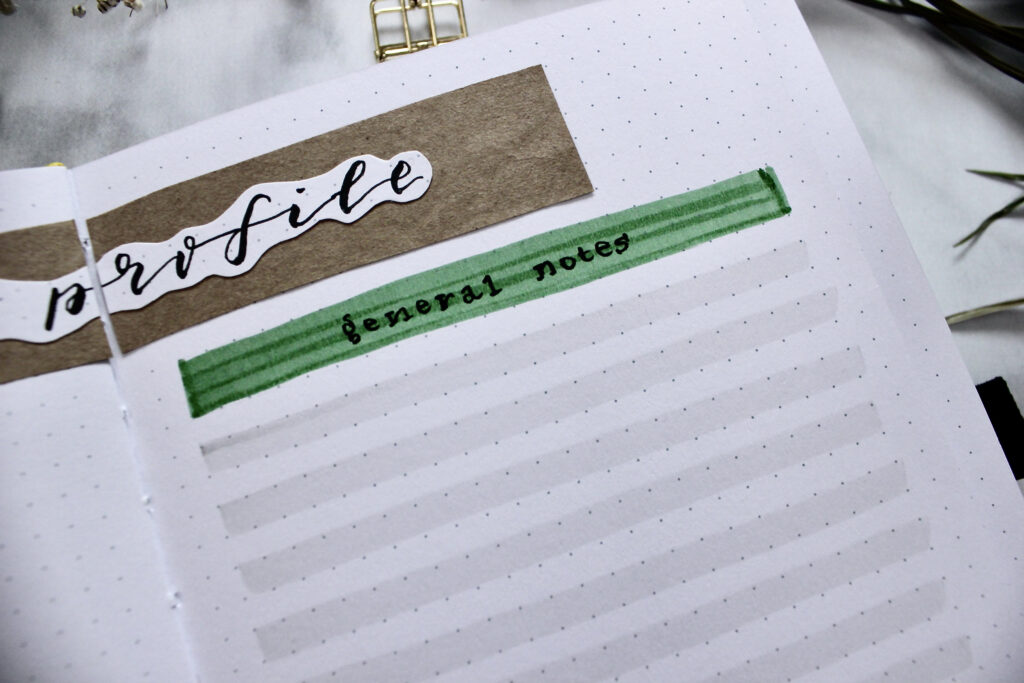
This is only what I have written down so far because I haven’t started harvesting. The general notes section could be looked at as a diary for the plants progress. For now, I am including only important dates but have seen other creators do a daily log for their gardens instead. So that could be an option too for you if you want more room to write down what you are seeing.
Bonus Spreads
Just because I am only using 5 spreads in my first garden journal, doesn’t mean there aren’t more spread options out there. At this stage in the game for me there isn’t any value for me personally in adding them. Please keep that in mind when you are also creating your bullet journals. What I do and what others do will not 100% match your needs… switch things up to match who you are!
Garden Projects
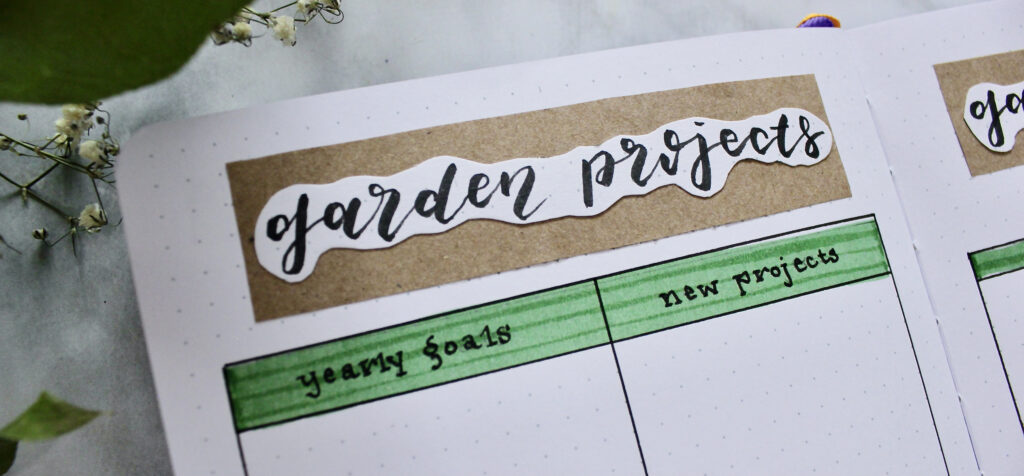
I will 100% be using this spread in my 2023 garden journal right at the beginning. It just didn’t make sense to put in at this point in the 2022 garden season. The page breaks down yearly goals, projects, things learned and general notes.

It does have a similar vibe to the 2022 overview page but is a little different. Here is a perfect example of what I’m talking about: switch things to fit your needs. I didn’t need everything in here for 2022 but I will be pulling it out in 2023 planning.
Garden Budget
This is one I could have used at the beginning of the year. I may or may not have a problem with wanting to go full in on new projects. I’ll buy this and that and everything in between because that is what it takes to do it, right?? WRONG!!
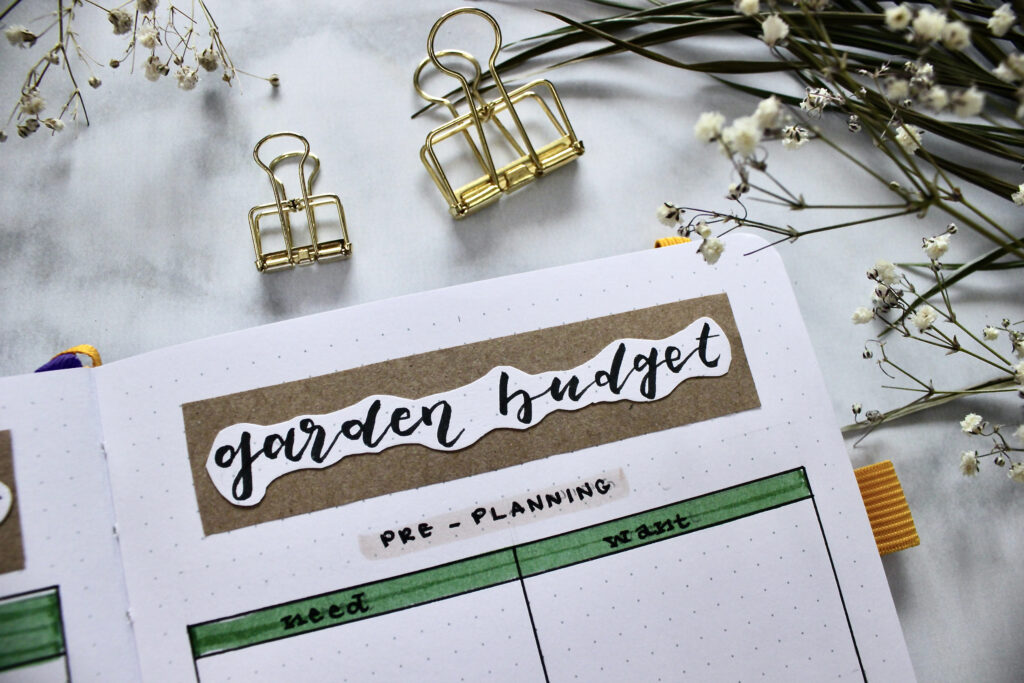
What you need vs. want are totally different when it comes to any new project. For my first year I borrowed trellises, used containers from Canadian tire (what you would use for Christmas box storage), got free wood from Home Depot to make stands and bought everything I could I sale.
Gardening is expensive when first starting off. The biggest killer on the need list is soil. So I looked up different ways to make your soil go farther to reduce this expense. There are TUNS of resources out there if you are willing to look and put in the time.
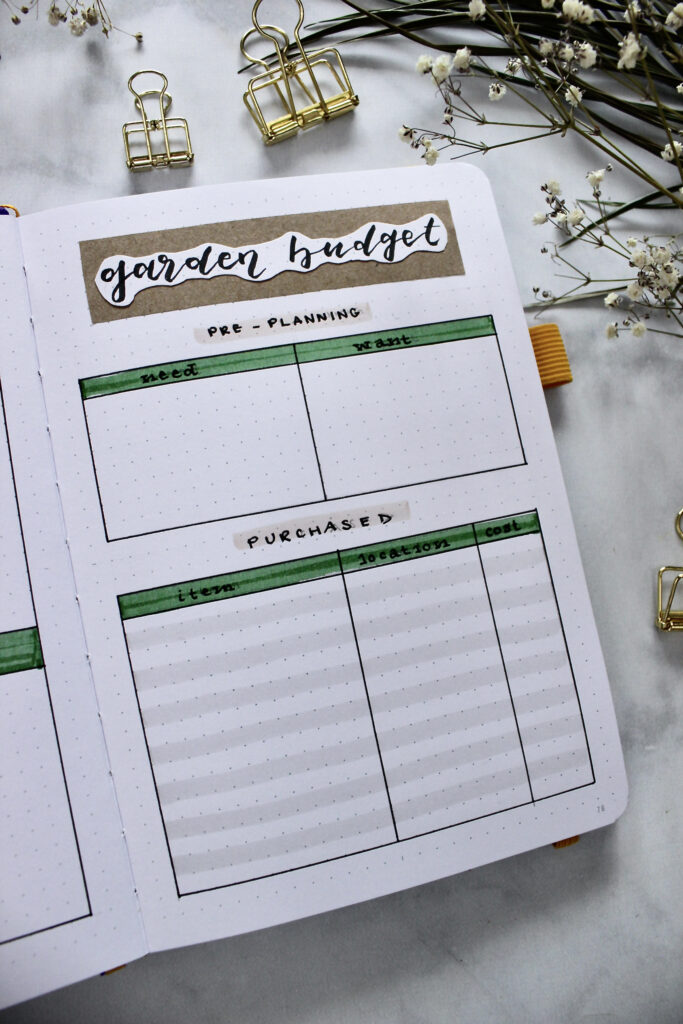
For me borrowing was a life saver and friends and family are always happy with some veggies as a thank you.
Sq. Ft. Planner

If you are a planner, this layout may be your best friend when it comes to planting things in your garden. I on the other hand like to wing it. I don’t think I will include this in my planner anytime soon but that doesn’t mean it isn’t useful.

Certain plants require a specific amount of spacing between them or don’t thrive when they are planted close to another type of plant. Planning out the square foot areas can help you maximize space and avoid issues like I had with my repotting my tomatoes.
Seasonal To Do
Gardening doesn’t just happen in the spring and summer months. There is quite a bit of planning and prepping involved in the fall and winter.

Realistically I should I have done this spread before entering into the season but didn’t really have the time to in relation to when I deciding I was growing vegetables this year. I think this page would be a great brain dump area, just to write down a couple words on what needs to happen when.

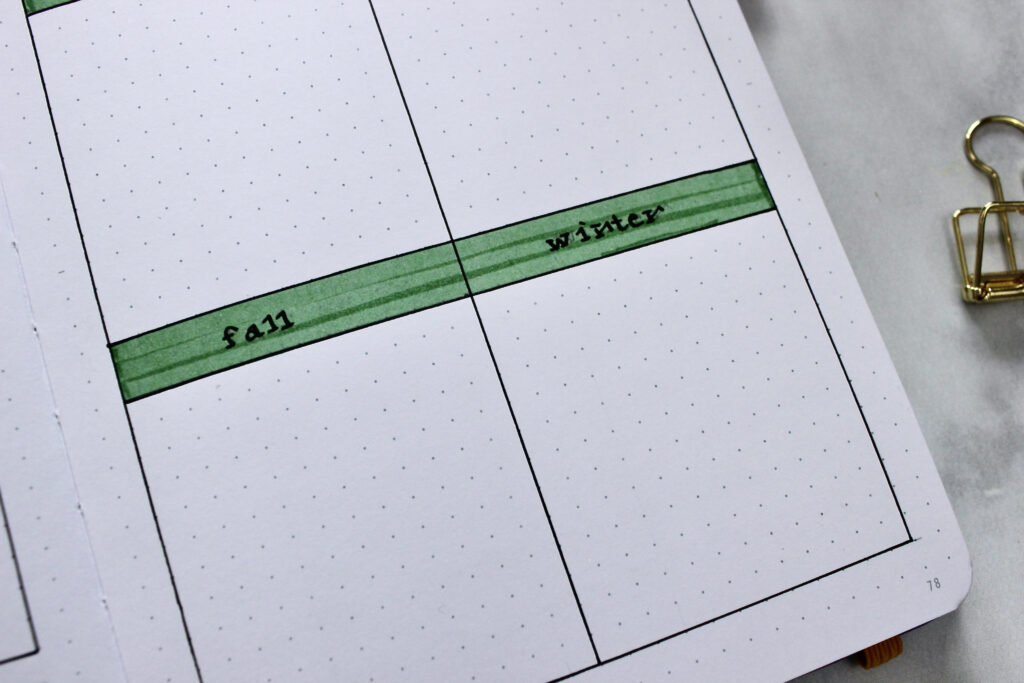
Then when you come into that season of planning you can take the jot notes and develop them if need be. That way it reduces the likelihood of forgetting anything, which I am guilty of too often.
Soil Status
I am nowhere near in my garden journey to be tracking something like this. From the people I watch on YouTube whose jobs are their farms, tracking soil status is important. I am by no means an expert but what I have figured out through listening to others, is that what elements are in the soil (think minerals, ph levels, pesticides, etc.) influences the success of your growth.


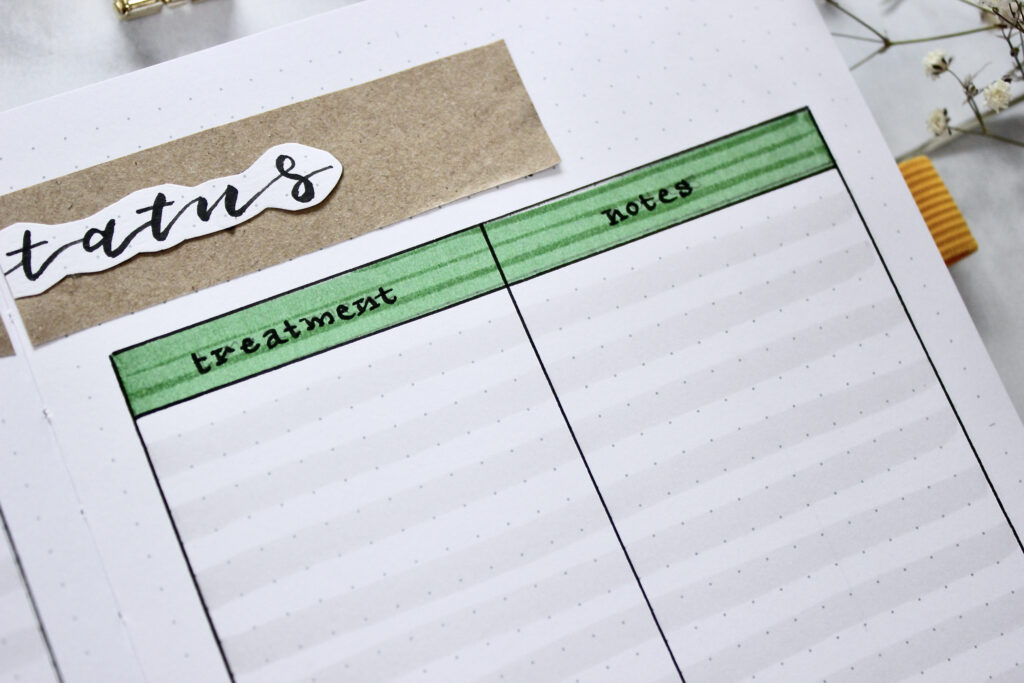
Since this is only my first year, I don’t know the difference of how the plants should be growing or looking. Personally, it would add any value to my tracking so I didn’t include this in my garden bullet journal set up.
Pest & Disease Log
Could I have used this… yes. Did I want to set up a spread for one issue… no. Instead, I wrote it down under the plant profile tab in the general notes section. We are mixing and matching spreads here!

The layout of this spread is very similar to the soil status log where it has the date, plant, issue, treatment, and general notes. These spreads I would make when needed since you may not have any issues with your soil, pests, or plant disease.
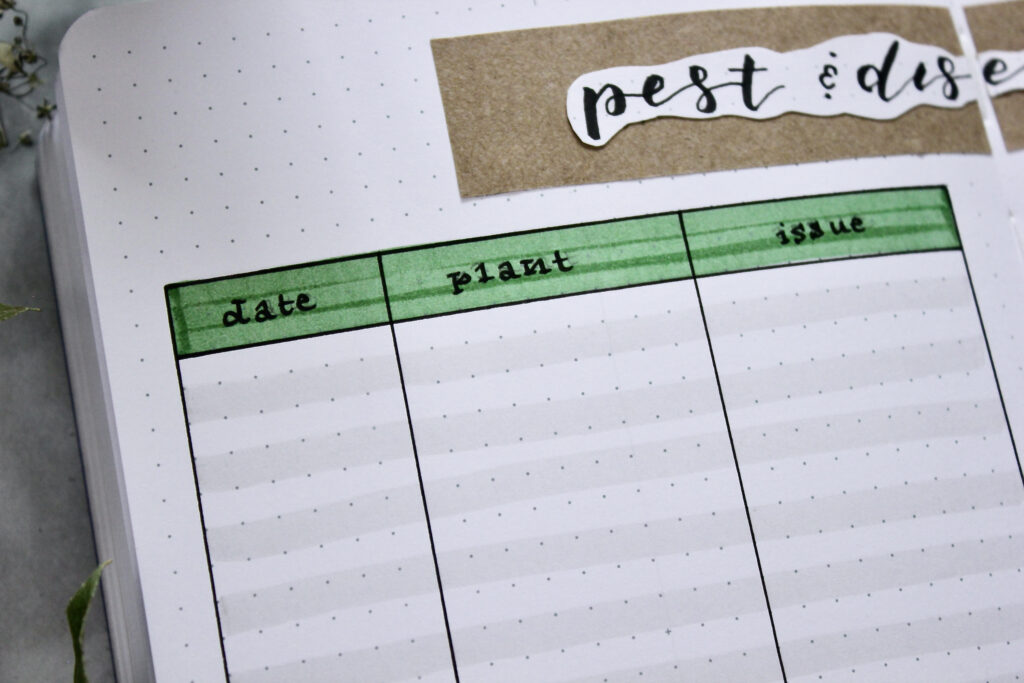
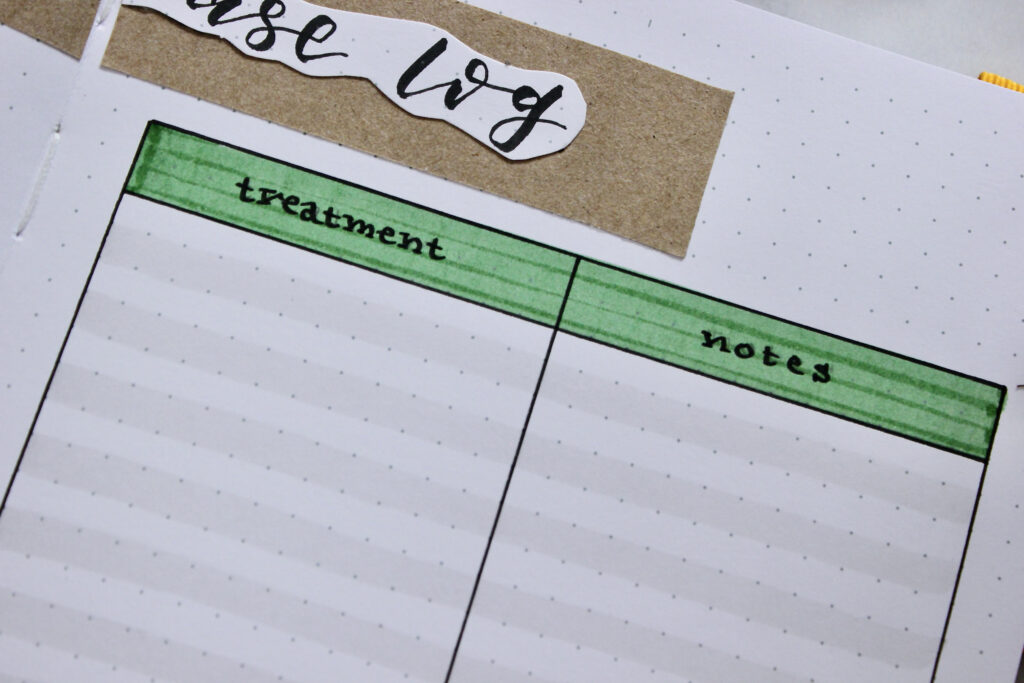
Overall, these spreads are just a starting place to guide you along your record keeping journey. If you have any other spread suggestions on what you find helpful in your garden journal let us know in the comments below!
